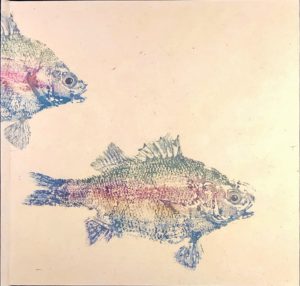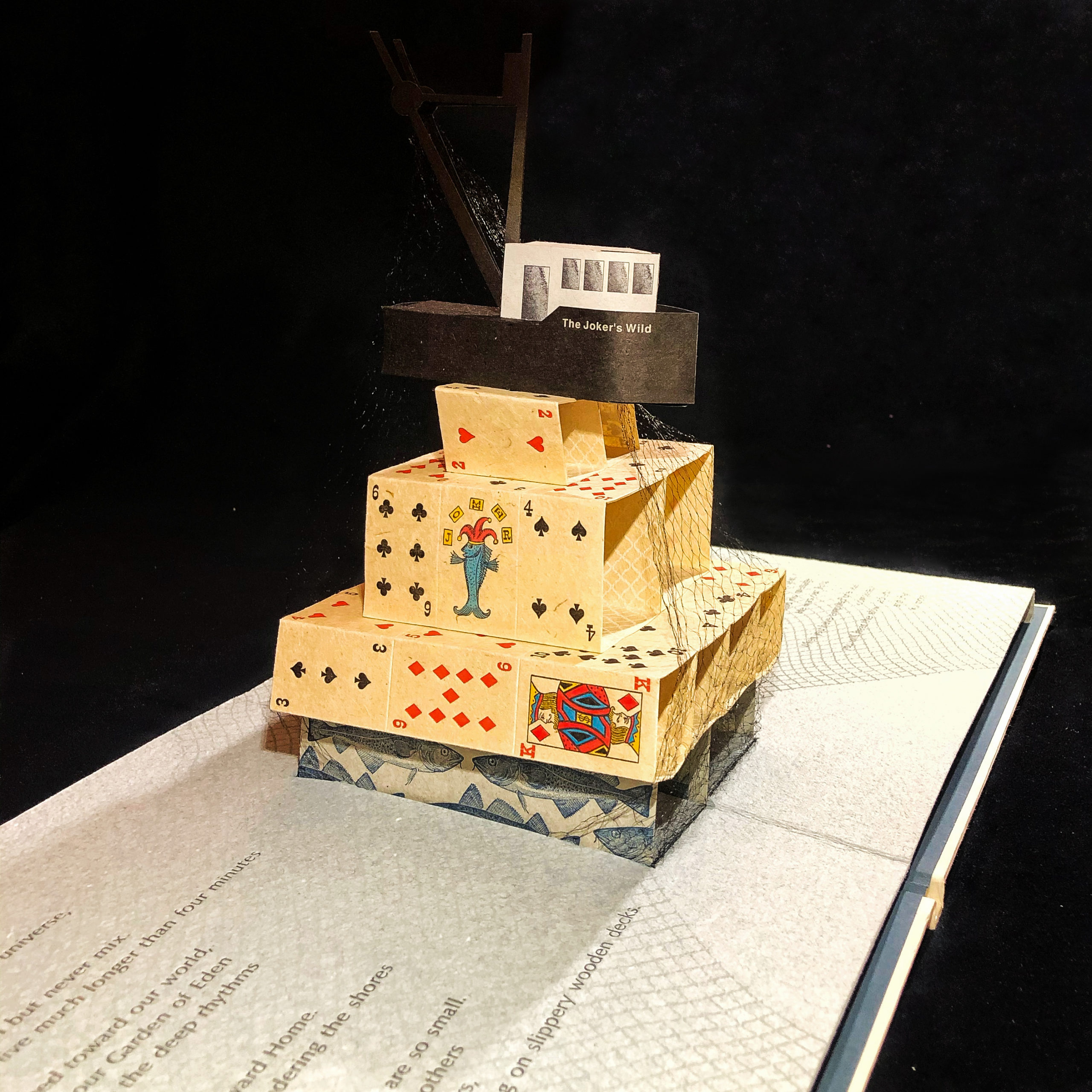In recognition of Smithsonian’s Earth Optimism Digital Summit (April 22 – 26, 2020), this week’s post features a work from the Design Library, focused on environmental issues.
The artist’s book, House of Cods, published by Linda Smith and Picnic Press in 1996, presents an engaging use of the book as a form of artistic expression, here addressing the environmental impact of overfishing. Smith, a book artist, designed, printed, and assembled the publication, featuring the poem House of Cods, by Carol Schatt. The tongue-in-cheek title offers an amusing play on words and pronunciation with a Massachusetts accent (“cods” instead of “cards”), while the serious-minded text speaks of the delicate marine ecosystem and the consequences of fishing on an unsustainable commercial scale.
Smith reinforces the message through her use of both naturalistic and fanciful imagery and imaginative paper construction. She embellished the book’s cover with two naturalistic printed images of fish in rainbow colors. Smith created the images using the traditional Japanese printing technique called gyotaku, in which an actual fish or other sea creature is used as a “printing plate” to make a detailed impression of the animal directly from nature. This form of printing creates a unique image that would be challenging to make with conventional techniques such as wood block printing or etching. Smith printed her gyotaku fish impressions on various Mexican, Philippine, and Thai handmade papers.

Book Cover: House of Cods, Linda Smith, published 1996, printed paper, gyotako technique. Smithsonian Libraries, N7433.4.S658 H68 19
The book opens to reveal an intricate paper pop-up structure that takes the form of a commercial fishing trawler perched on a house of cards. The boat, named “The Joker’s Wild,” is constructed of black and white paper, its net cascading down its sides onto the colorful, boxy card structure below. Smith continues the joker theme in the motif on the cards, where the joker is represented by the image of a fish wearing a jester’s cap. The house of cards is delicately balanced on a short, rectangular paper support printed with images that recall the lifelike fish impressions on the book’s cover. This three–dimensional paper art sits on pages printed with the image of netting overlapping the text of Schatt’s poem lamenting the destructive consequences of overfishing, from the point of view of a cod.
Smith produced fifty copies of House of Cods. Many are housed in library collections across the country, raising awareness and documenting environmental concerns through art. The copy in the Design Library at Cooper Hewitt is part of the Smithsonian Libraries’ large collection of pop-up and artists’ books. To find out more about these works, please visit http://library.si.edu/collection/artists-books .
Erica M. Schaumberg is a graduate student in the History of Design and Curatorial Studies program offered jointly by Cooper Hewitt and Parsons School of Design. She is also a fellow at the Cooper Hewitt, Smithsonian Design Library.

2 thoughts on “House of Cods”
Tom Goodridge on April 30, 2020 at 11:44 am
Very thoughtful and wistful commentary on the ravages upon the cod and other marine life by our industrial fishing practices.
By taking the cod’s perspective, the artist uses the human gift of empathy as a portal to the unwelt of the cod.
Abigail Castelo on May 3, 2020 at 6:03 pm
This is such a cool piece of art! thanks to my art teacher for showing me this!